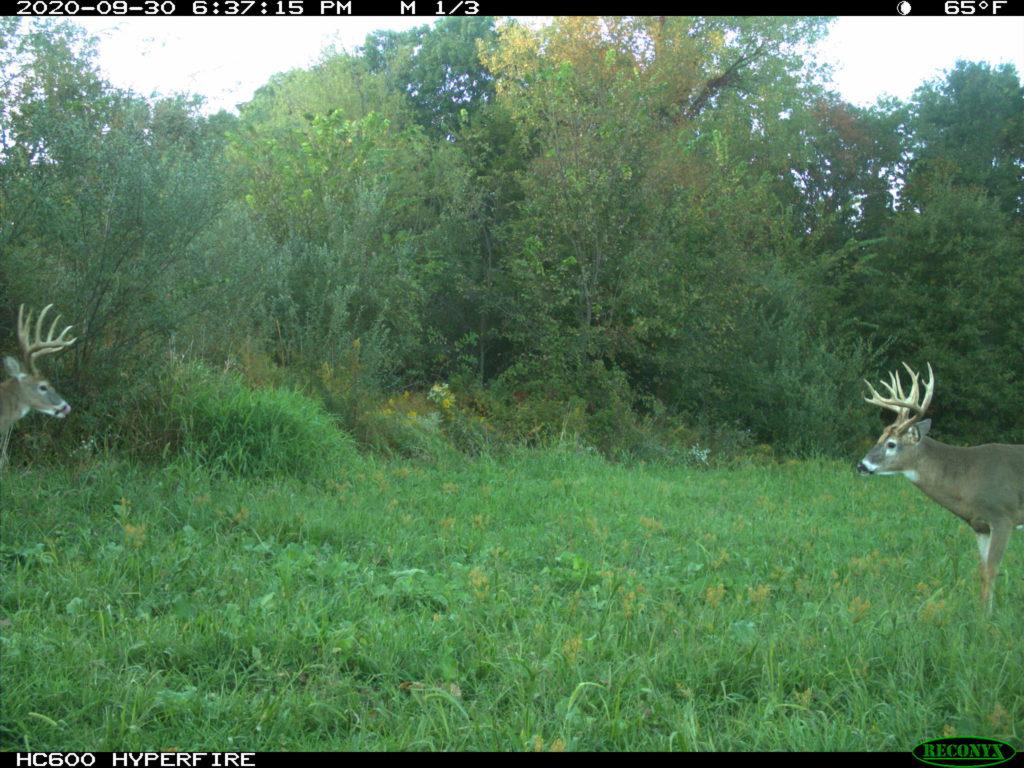For as clearly as we understand dominance in the deer world, we still must understand that population dynamics, the quality of habitat and a host of other factors will play into all of this as well. Let’s get deep into the weeds on how these factors play out, leading to deeper insights into your own herd dynamics.
This is Chapter 8 of Steve Bartylla’s free online book, Understanding Mature Bucks.
So, if you’ve been following along, you should understand mature buck home ranges, core areas, seasonal shifts and generally why. We get that dominance is an issue within and between family groups, as well as with bucks. We even understand that the dominance structure is like a ladder, in that there are levels or rungs, but it really resembles a pyramid in shape, as the higher one gets in dominance the fewer peers they have, until there’s just one sitting on top. Because of that, most mature bucks are really both submissive to some other bucks and dominant over a bunch more.
The pecking order really begins being established in the summer bachelor groups and pretty much gets locked in a few weeks before peak scraping is over, causing a shuffling of bucks going from high stress locations to fill holes within their home ranges that have lesser or no dominance competition for them.
After that, most true fights really occur when either two pretty evenly matched bucks, same level of the pyramid, both want something bad enough to throw down. This is often over a doe, but fights can be simply over turf or a stranger buck that is caught wandering through. When the stranger and resident both are set on asserting dominance, a fight generally ensues.
It’s been alluded to, but it’s time to flatly state that many mature bucks are truly dominant in one area of their home range and must be submissive or fight in others. When mature buck numbers are comparatively high, that can result in Mr. Big spending a tremendous amount of time in a pretty darn small area of his home range, throughout most, if not all of the rut.
It’s almost as if Mr. Big gets paranoid that some other buck is going to steal his turf or girls. Most times I see this play out, it’s over 50-200 acres of dirt. I’ll get picture after picture after picture after picture of that same buck in that same area, often many times each day, at any and all hours. I’ve actually spooked a couple of those types of bucks when hunting or checking cams, only to have them pop back out in the same plot within 10 mins. I could be wrong, but I honestly believe, under high mature buck competition, some mature bucks get flat out paranoid/desperate to hang onto the corner of their home range that they dominate.

Now, compare that to a big woods setting. Because the habitat just can’t support the same deer numbers as the closer to 50/50 mixes of ag and cover areas can, Mr. Big just doesn’t hardly ever have the competition of the sheer numbers of mature bucks per acre as his farmland brethren can have. Often, age structure is actually much more advanced in big woods settings, as they typically have comparatively less hunting pressure per acre, often with large chunks actually going completely unhunted on any given year. However, the 5-20 deer per square mile of habitat the mature buck in the big woods must deal with is nothing compared to the 100-200 deer per square mile of habitat that mature bucks in highly populated farmland belts endure. Those same farm crops that are responsible for allowing such high deer numbers also punish those deer with massively higher levels of social stress.
That plays a big role in how the losers of these battles for dominance react to the loss. Frankly, that 3.5-year-old buck just a couple years shy of maturity, living in Iowa, will face completely different circumstances than if he is in the Michigan Upper Peninsula. In the deer-rich areas of Iowa, that 3.5-year-old just isn’t going to find anywhere within his home range that’s even just decent where he won’t have to compete with other 3.5-year-old and older bucks. In the UP, that 3.5-year-old will very likely have all sorts of areas within his home range he can claim. Frankly, the big wood’s 3.5-year-old’s life is likely to be impacted comparatively little by other bucks, when compared to a 3.5-year-old living in high deer density areas.
My point is that there are a bunch of factors that play into this type of stuff. Merely realizing that keeping your eyes open and your mind receptive to new data, whether it backs up or disproves your beliefs, is a huge step in putting all these pieces together, or at least has been for me. No one can sit here and tell you what the mature bucks are doing and exactly how they will react to things on your ground IF they don’t have a lot of solid data already in their hands. So much of this stuff is based on deer densities, age structures, habitat types, heck, even the personality of the deer involved and certainly how that deer fits into the area’s hierarchal scheme.
That said, deer don’t know how to lie, hide their motives or even mask their intentions. Truly observe them and they will teach you everything through what they do on camera and the signs they leave. Don’t just see that type of stuff; absorb it and try to connect dots. If nothing else, when you get that deer on cam, ask where its likely coming from, what’s it doing and where’s it going? Most of us ignore so dang much of what deer try to tell us. As my mom used to tell me as a kid, “Don’t be most. Be better.”
Read Chapter 1: Whitetail Tendencies
Read Chapter 2: Whitetail Home Ranges
Read Chapter 3: How Deer Use Core Areas
Read Chapter 4: When Core Areas Shift
Read Chapter 5: Seasonal Shifts
Read Chapter 6: Family Group Dominance
Read Chapter 7: Male Dominance



